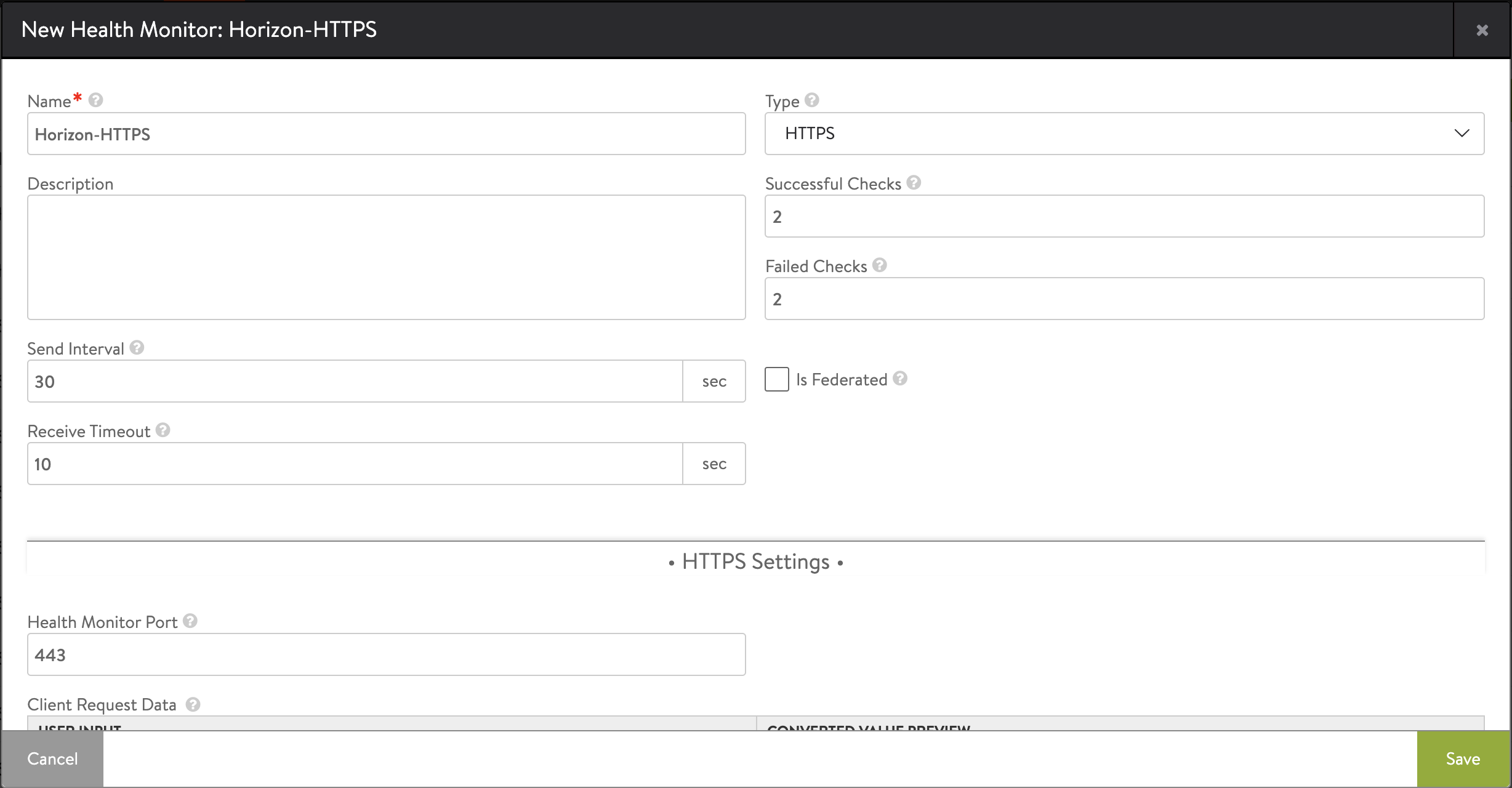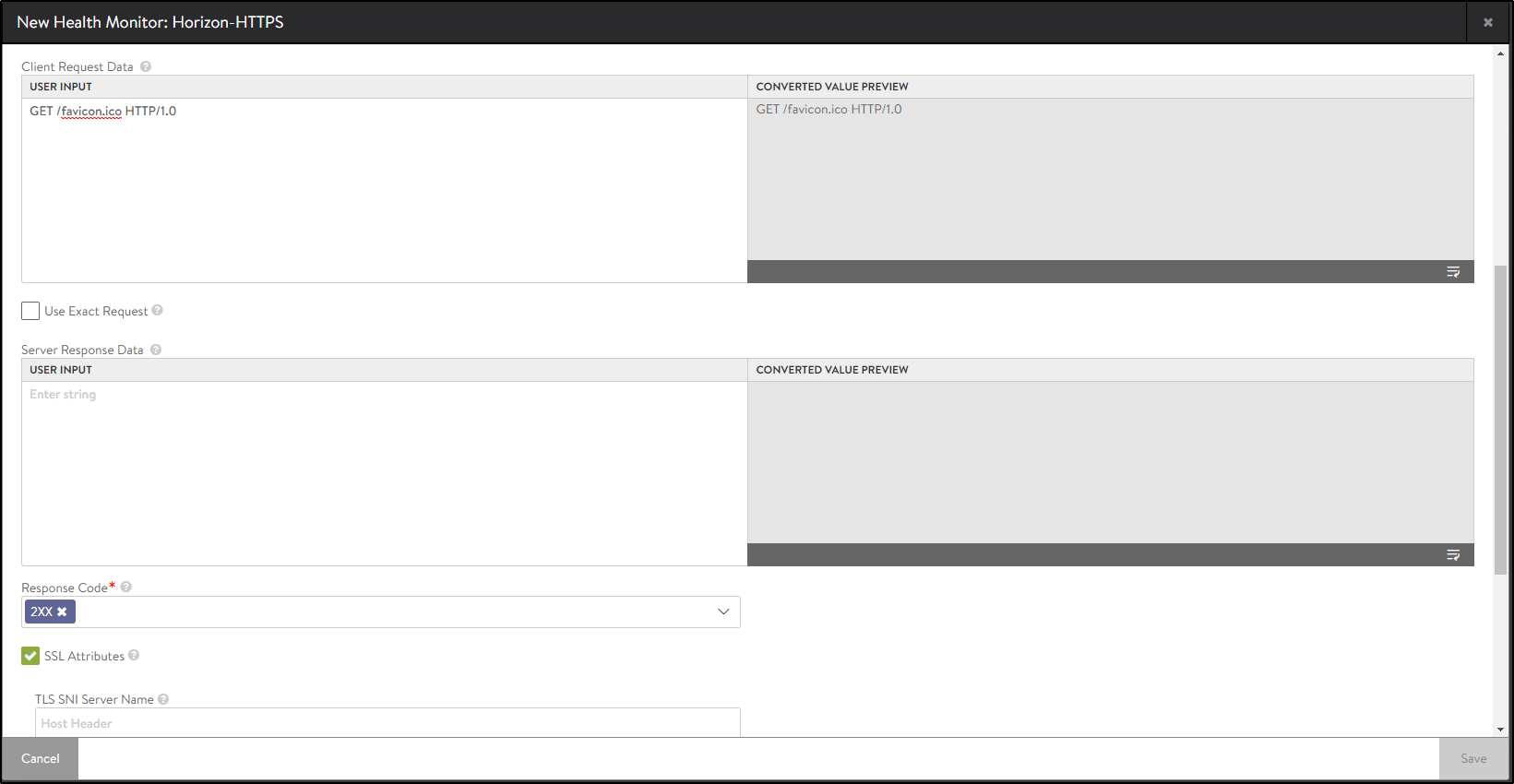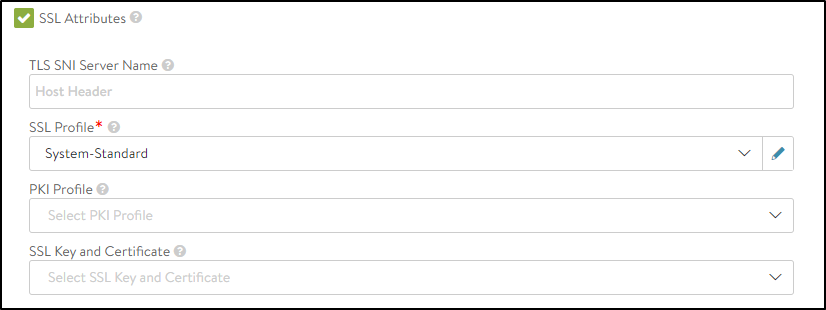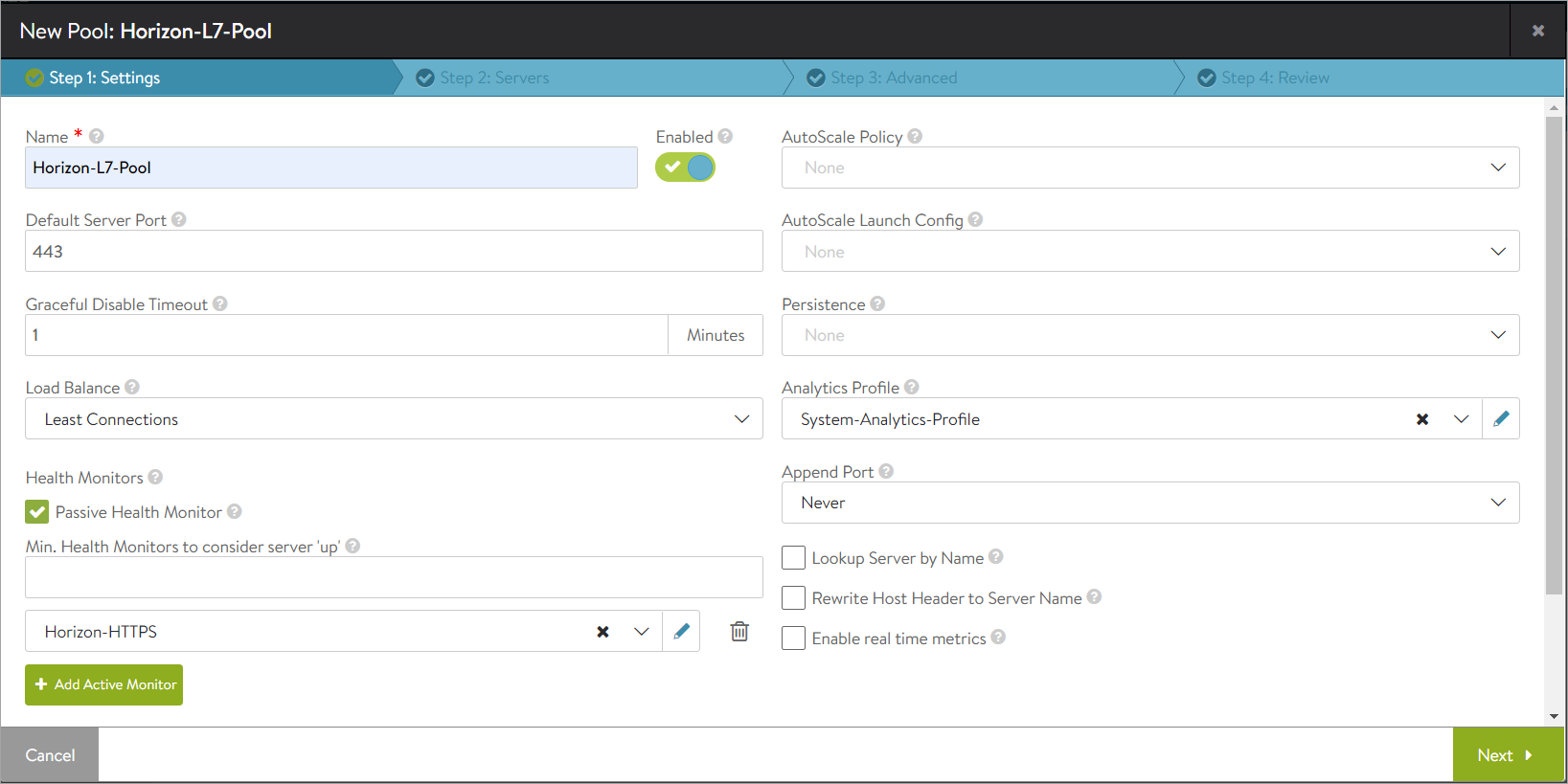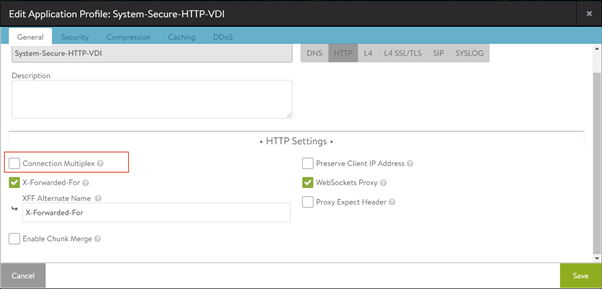Load Balancing for Horizon Environments in (n+1) Mode using 307 Solution
Overview
In an n+1 deployment only the primary protocol traffic (XML/API traffic) will go through Avi VIP. Blast and PCoIP traffic will go to UAG servers directly.
Prerequisites
Ensure the following prerequisites are met:
- Avi Controller is set up.
- The Avi cloud configuration is complete.
- DNS entries are configured properly as explained in the example below.
- UAG servers configured as per requirements along with other Horizon components for n+1 deployments.
Sample Topology
Consider the request flow with the sample topology:
Note: The sample topology illustrates Horizon deployment in a DMZ network. However, Avi Vantage supports deployment in both DMZ and non-DMZ networks.
| FQDN | Entity Description | IP Address used for DNS Entries | Real IP |
|---|---|---|---|
| uagvip.site1.com | FQDN of Avi LB VIP | VIP 1 | 10.10.5.200 |
| uag1.site1.com | FQDN of UAG server 1 on site 1 | UAG server1 IP on site 1 i.e. 10.58.17.163 | 10.58.17.163 |
| uag2.site1.com | FQDN of UAG server 2 on site 1 | UAG server2 IP on site 1 i.e. 10.58.17.164 | 10.58.17.164 |
Note: The IP and FQDN used in the example are for illustration purposes only. Replace this with your real environment details.
Request Flow for load balancing UAG Servers for (n+1) Deployments
The request-flow this deployment is as shown below:
- User sends a request to access uagvip.site1.com over the internet.
- The request comes to Avi.
- The Avi load balancer does the load balancing and sends the request to one of the backend UAG servers. In this case, assume that Avi sent the request to UAG server 1 i.e. uag1.site1.com
- UAG sends 307 redirect to client with uag1.site1.com FQDN. UAG servers should be configured with the 307 feature as explained in Unified Access Gateway Support for HTTP Host Redirect. A sample UAG configuration is shown here.
- Client looks for location header and queries the host in the location header (uag1.site1.com).
- Due to the DNS entries that were created (shown in the tables above), the FQDN (uag1.site1.com) will be resolved to UAG server IP.
- All further flows, including the ones for secondary protocol (Blast/PCoIP), will now go to uag1.site1.com directly, bypassing Avi LB.
Configurations for Load Balancing UAG servers
The configuration steps for load balancing UAG are as below:
Follow the steps below to configure the site 1:
Creating Custom Health Monitor for UAG
To create a custom health monitor,
-
From the Avi UI, navigate to Templates > Profiles > Health Monitors.
-
Click on Create.
-
Select the VMware cloud that was created for Horizon.
-
Enter the following details in the New Health Monitor screen.
Field Value Send Interval 30 Receive Timeout 10 Client Requested Data GET /favicon.ico HTTP/1.0 Response Code 2xx -
Click on Save.
Creating Pools
Creating the UAG L7 Pool
To create the pool,
-
In Avi Vantage, navigate to Applications > Pools.
-
Select the vCenter cloud from the Select Cloud sub-screen.
-
Click on Next.
-
Click on Create Pool.
-
In the New Pool: screen, update the details as shown below:
-
To bind the monitor, click on Add Active Monitor and select the HTTPS monitor that was created.
-
Click on Next.
-
Click on Enable SSL and select the appropriate SSL profile as shown below:

-
Click on Next.
-
In the Step 2: Servers tab, add the Server IP Address of the UAG servers created earlier and click on Add Server.
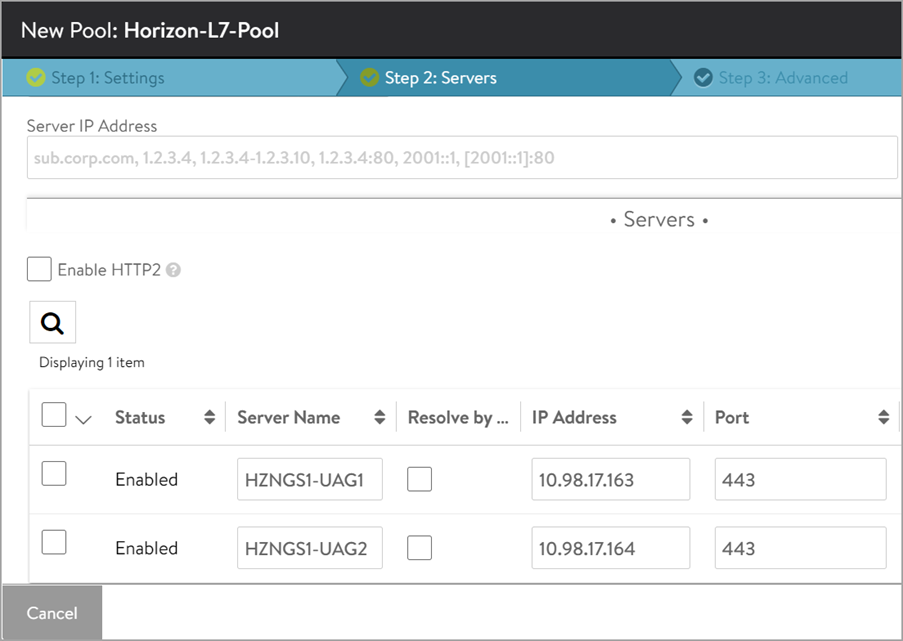
-
Click on Next.
-
Navigate to Step 3: Advanced tab > Step 4: Review.
-
Click on Next and then click on Save.
Installing the SSL certificate Required for L7 VIP
The SSL connection is being terminated at the Avi virtual service. Therefore, the SSL certificate must be assigned to the virtual service . It is recommended to install a certificate which is signed by a valid certificate authority instead of using self-signed certificates.
Install the certificate in Avi Vantage, and ensure the CA certificate is imported and linked. For information, refer to Import Certificates.
Note: For this set up, a certificate named Horizon_Certificate has been installed.
Add the SAN certificate to UAG as explained in the Configuring TLS/SSL Certificates for Unified Access Gateway Appliances. Install the same certificate and key pair on Avi and bind it to the UAG L7 virtual service.
Disabling Connection Multiplexing
In case of UAG load balancing, disable connection multiplexing for the System-Secure-HTTP-VDI profile.
To disable connection multiplexing,
-
Navigate to Templates > Profiles> Application > System-Secure-HTTP-VDI.
-
Click on the edit icon.
-
Click on Save.
Creating an L7 Virtual Service
To create the new L7 virtual service,
-
From the Avi UI, navigate to Applications > Virtual Services.
-
Click on Create Virtual Service > Advanced Setup.
-
Use the System-Secure-HTTP-VDI as the Application Profile.
-
Configure the virtual service as shown below:
-
Click on Next.
-
Click Save.
Important Configuration to Check on UAG for this Solution
Host Redirect mapping should be configured on all UAGs.
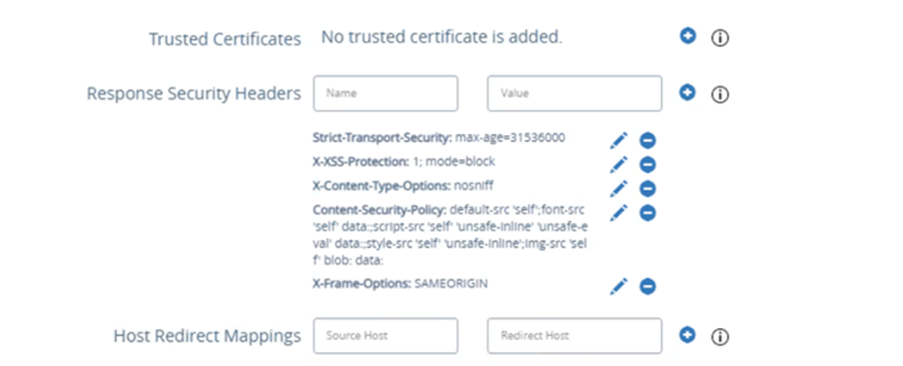
Notes:
- Ensure the following:
- The source host is the LB FQDN. For example, uagvip.site1.com
- The redirect host is the UAG’s FQDN. For example, uag1.site1.com
- Upload the TLS server certificate for the internet interface on all the UAG servers
Other Considerations
- If SAML authentication is used on UAG, all the host names/FQDNs must be added in SAML IDP as shown in the example below:
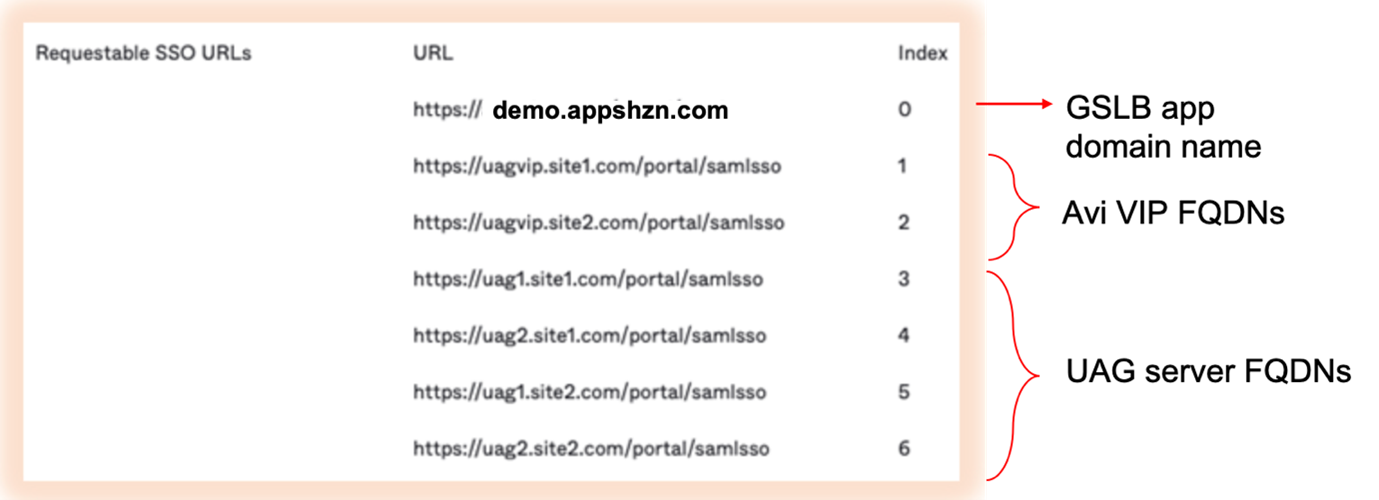
In some cases, when accessing the VMware Horizon Client, multiple icons for the same site can be displayed as shown below:

This issue will be resolved in the upcoming releases for Horizon Client.


